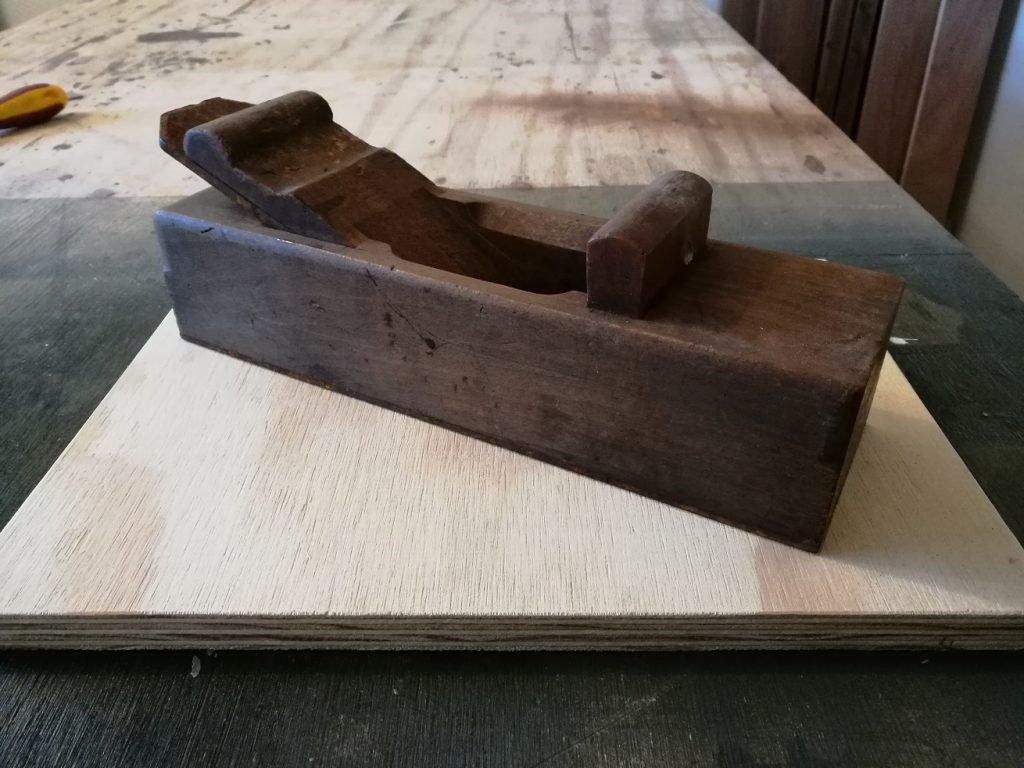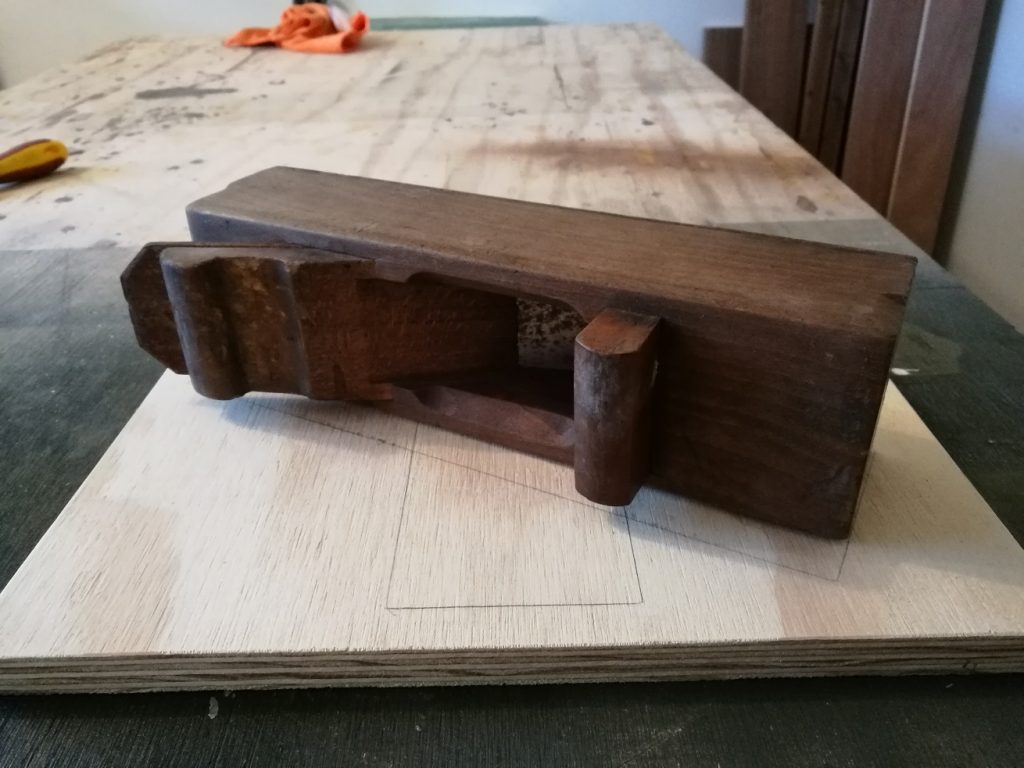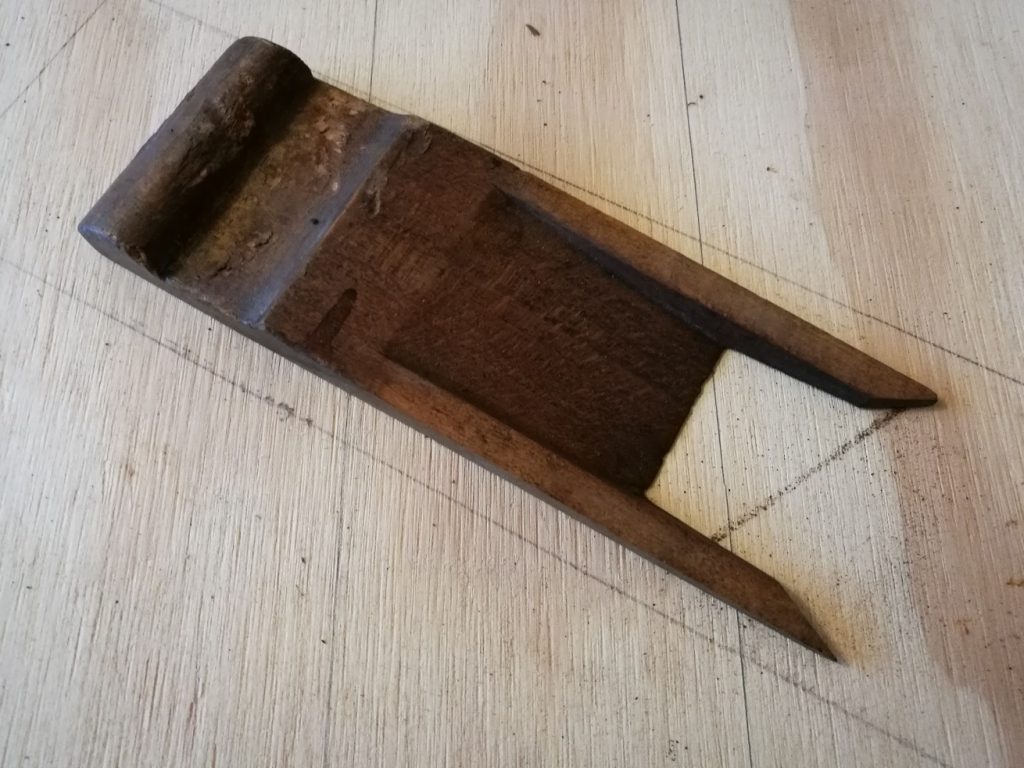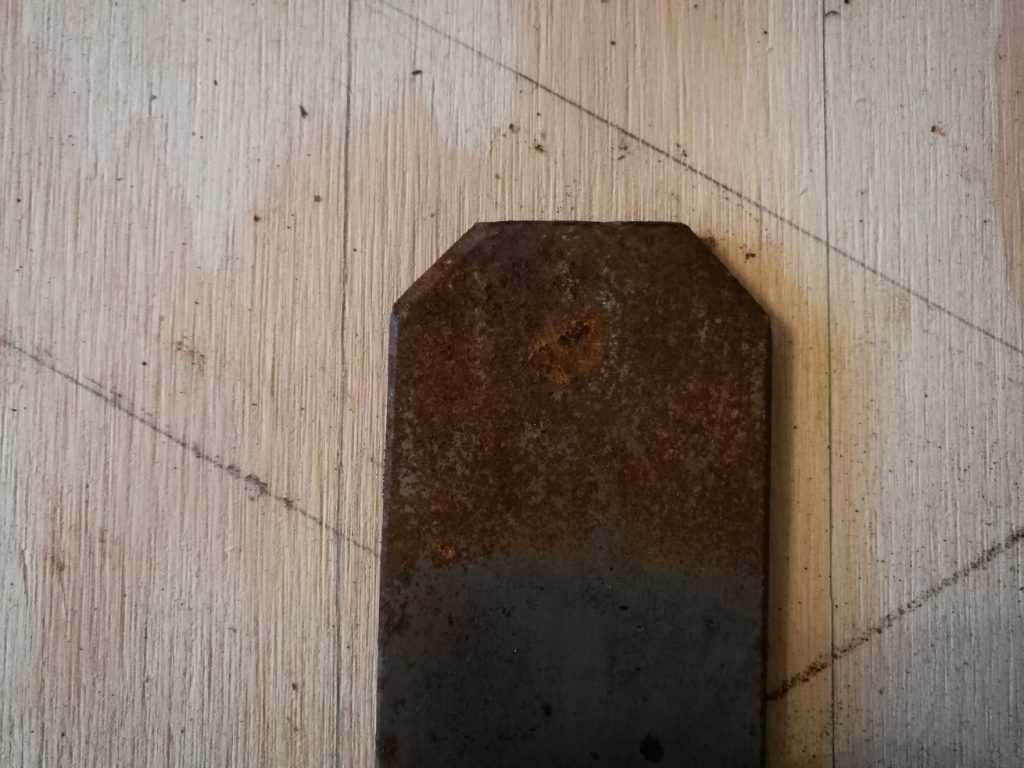The other day I dropped into an antiques store I visit fairly regularly. He knows my obsession with old hand woodworking tools, so immediately showed me a new plane he had just got in. £8 later and it was mine:

It is a wooden mitre plane. It was love at first sight, and decided I was going to name her Chunky, due to the weight of her!
A close look at the front showed a makers mark and an owner’s mark, although they are barely visible:

It is made by Mathieson of Glasgow, a very well known Scottish tool manufacturer operating between the 18th and mid 20th century. An interesting thing to note is that the logo is upside down, not uncommon but an interesting observation nonetheless. The owner’s name appears to be M. Sillers.
The base is made of two pieces of 1/8″ (3mm) thick steel fixed to the base of the plane with slotted woodscrews. The smaller front plate stops level with the front edge of the mouth, and a small stopped rebate is cut into the leading edge of the larger rear piece of steel to allow the cutting iron to protrude:

From the top, you can see the traditional construction, with the cutting iron held in place by a wooden wedge. There is also a mouth adjuster at the front of the cutout:

It was this detail that made me think the base plate was a user addition, as the mouth closer doesn’t appear to alter the mouth adjustment, as it would if the plane just had the wooden sole. Another clue about the base being a later addition was the fact that the cutting iron didn’t fit through the opening and make any shavings!
After a good look over it was time to start dismantling and giving everything a good examination:

First up is the wedge. It is well made and fits snugly into the body, holding the iron securely. However, it appears to have been hit with metal tools to release it over the years as it has lots of chunks missing from it. It is perfectly workable and all it needs is a clean:

Then the mouth adjuster. This has literally never seen any work due to the steel base completely negating it’s use. Apart from being dirty on the exposed surfaces it is as good as the day it left the factory:

Next the iron. It is a beast, easily the biggest iron in any plane I own. It measures 9 19/32″ (243mm) long, 2 17/32″ (64mm) wide and 3/16″ (4 1/2mm) thick. There is no taper to the blade. It weighs a ton! The leading edge is hollow ground, meaning it has been sharpened on a circular grind stone. Whether that is a traditional hand cranked one or a machine I don’t think I’ll ever know, but it has been done to a high standard, with the leading edge almost perfectly at 90 degrees to the length of the iron. The bevel itself is at a very shallow 17 degree angle. Without any contemporary data available to my knowledge I have no idea if this was the original angle the factory honed the blade to. It is in quite a bad way, but if there is no pitting or hidden cracks it shouldn’t take a lot of effort to get it as good as new:

Looking at the top of the iron appears to show a pattern, but it is impossible to tell whether a maker’s mark will be revealed when it is cleaned.

Finally I took a good look at the body itself. It is 12″ (305mm) long, 3 5/16″ (84mm) wide and 2 5/32″ (67mm) tall, including the steel base plate. The base plate itself doesn’t fit quite in line, with the front plate sitting proud of the mouth compared to the rear plate. The plate had clearly been ground down, as some of the screwheads are completely missing their threads, and some of the heads are much smaller than others due to wear. Talking of screws, they are arranged in a set pattern, but that didn’t stop one errant screw from penetrating through the sole of the plane and into the iron bed! It has been ground down to below the level of the bed and doesn’t affect the use of the plane.

The biggest problem for me is that the sides aren’t square to the sole. This is a big issue because I want to use it as a shooting plane, which requires the edge to be precisely 90 degrees to the sole. It can easily be repaired by removing material from the side of the plane, but this will also remove any patina and user marks on that side. It’s a huge shame as I wanted to keep as much of the original patina as possible, but like every tool in my collection it has to earn it’s keep, and a tool that is used is better than a tool that is left to rot.
After such a thorough examination and some interesting conversations with some very knowedgable folks on a Facebook woodworking group I’m in I had a good idea of the plane I had. The biggest surprise was that the metal sole was original from the factory, not a user modification! A wonderful gentleman provided pictures of the 1899 Mathieson Catalogue showing this style of plane. It looks like Chunky is older than I thought, and I’m sure she still has a few secrets to reveal.
This is part one of a series dedicated to Chunky the shooting plane. Next up, the restoration process…
